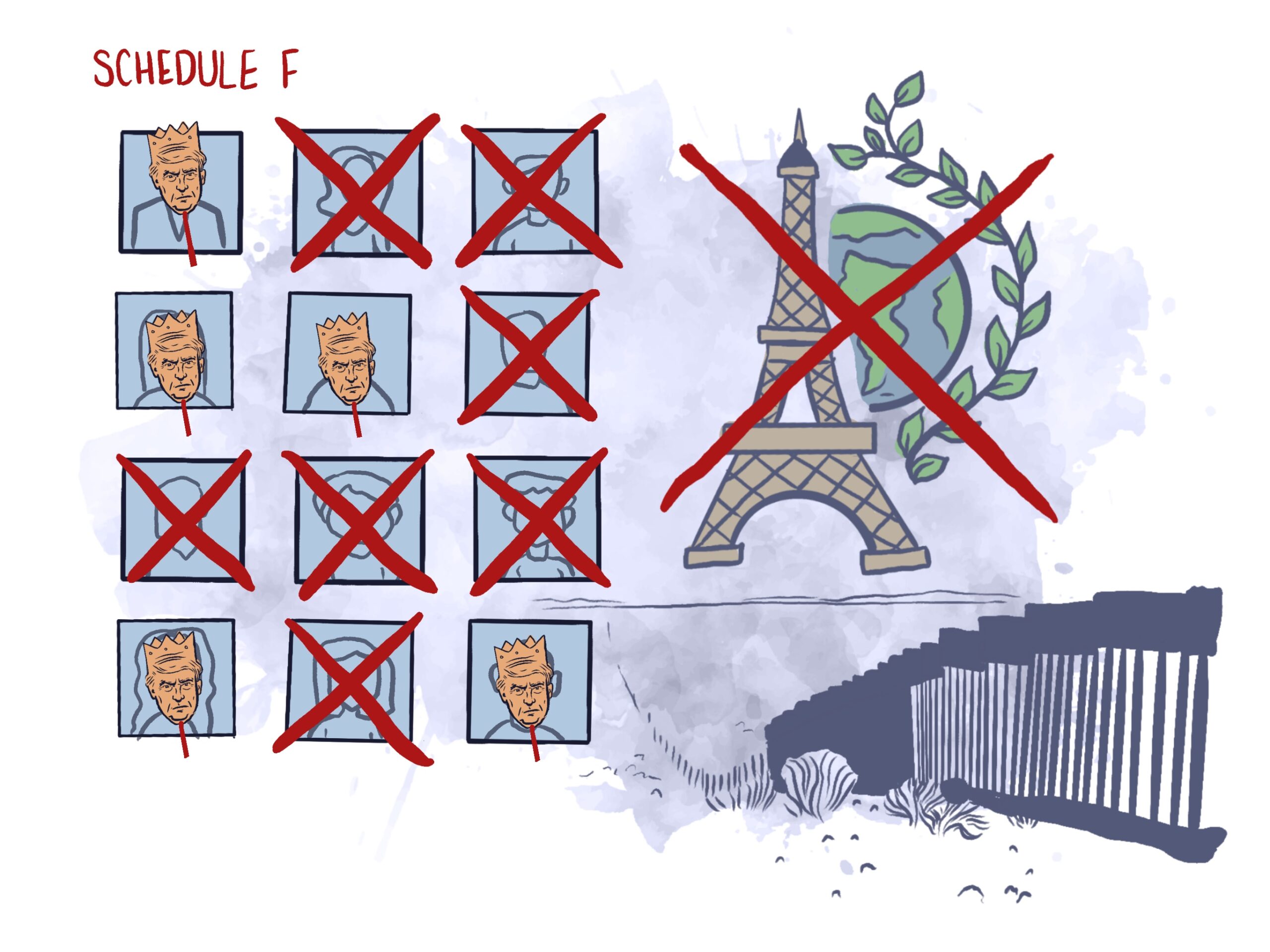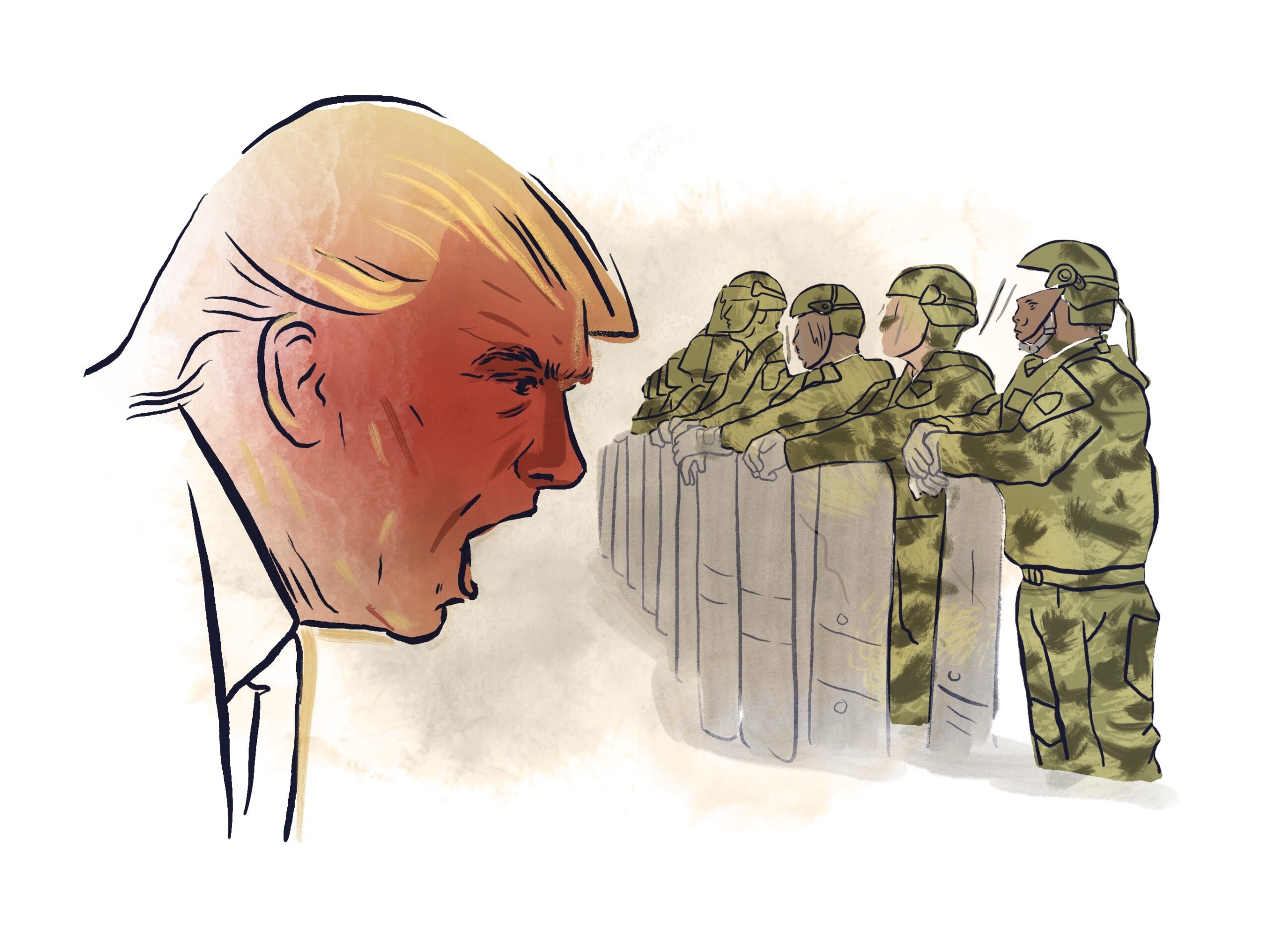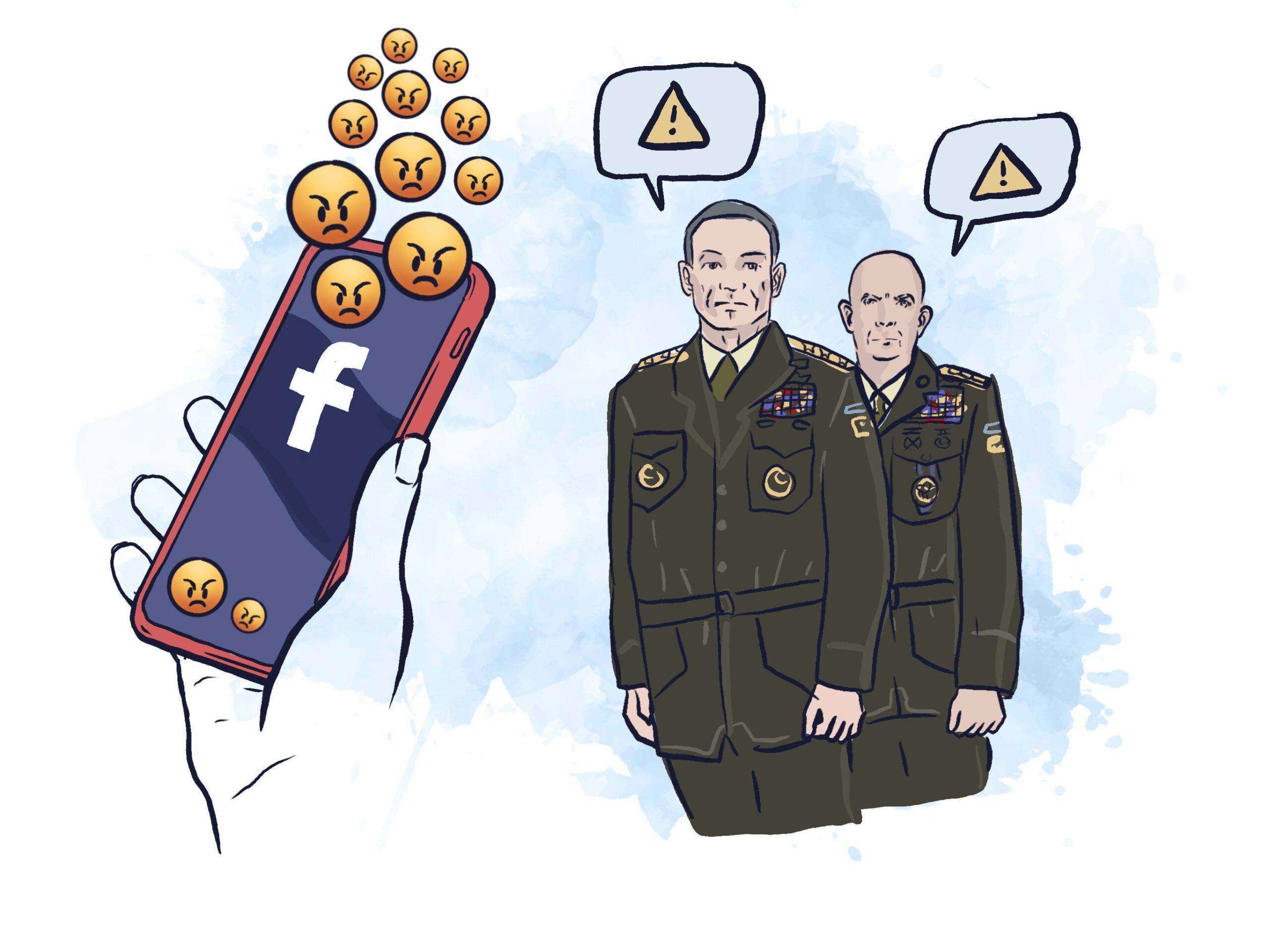On his first day in office, Trump signs a series of executive orders. He reallocates government money toward building a wall along the border with Mexico. He orders a halt to all government-led climate research and orders the U.S. to pull out of the international climate change agreements (Paris Agreement). Trump reclassifies 100,000 government workers as Schedule F employees — making them “political” appointees that he can fire. Courts approve an injunction to all of this, but tens of thousands of government workers are now living precariously.


You end up watching his boldest move the next morning: At 10 am, Donald Trump invites cameras into the White House. You didn’t mean to watch, but it was hard to peel your eyes away. He attacks the “lawlessness of Democratic cities” and promises to end it. He cites made-up crime statistics and the “wildly violent” protests since he’s been elected. He invokes the Insurrection Act, ordering the military to go into Philadelphia, Los Angeles, Portland, and Chicago and “secure” them.
Your mind races as you keep scrolling through responses on social media. Several retired generals publicly decry the announcement as overly broad. The military operationalizes this objection through military courts, which order limited roles and a minimal use of force. The National Guard goes into the streets in the named cities but for now does little more than walk around. The fear of an explosion of violence is palpable. Democratic politicians scream this is an “abuse of power” — but refuse to use words like fascist or dictator on Trump’s first week in office after winning a free and fair election.

